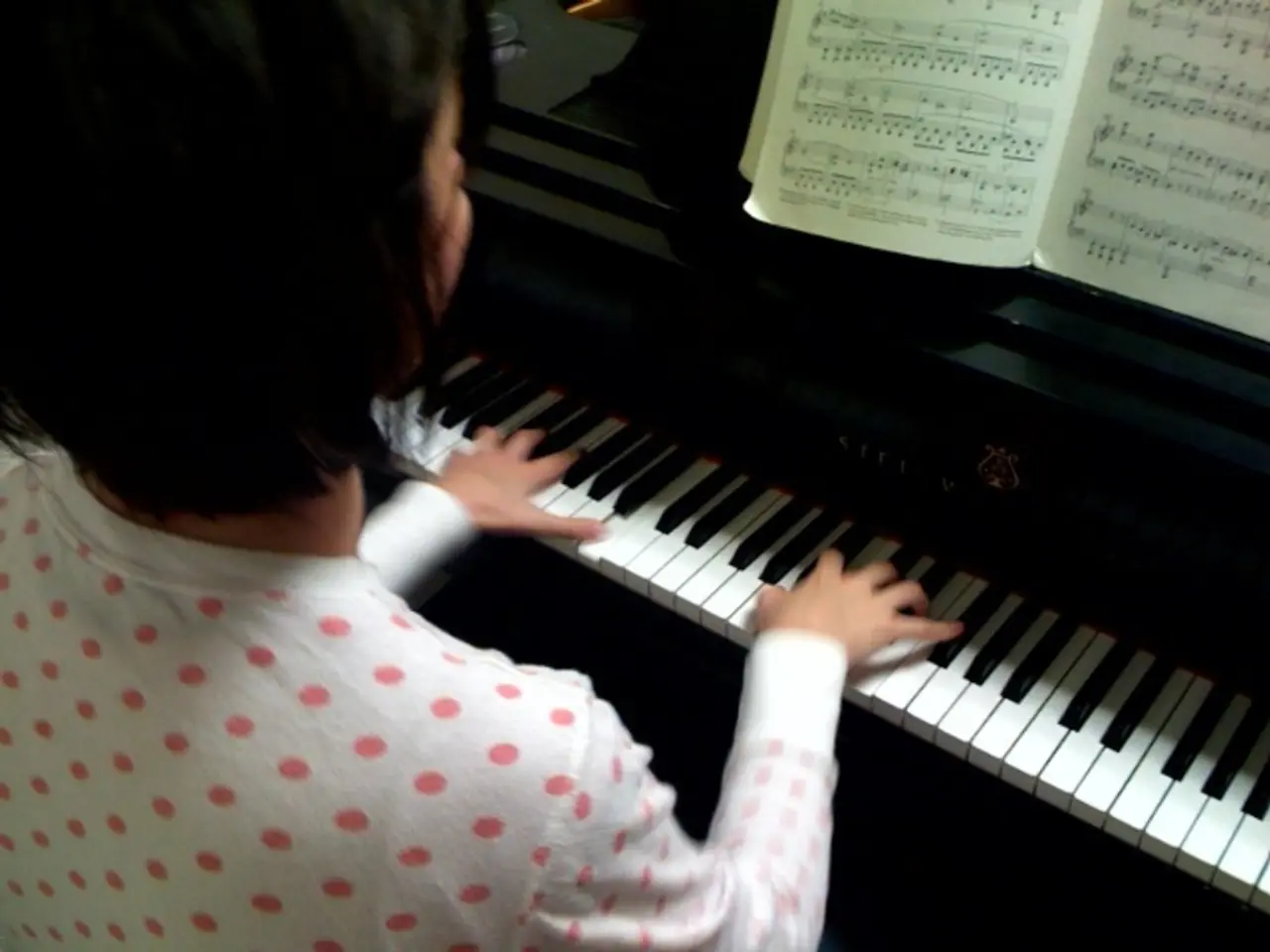Methods for Practicing Piano Scales
=========================================================================
Learning to play piano scales is an essential part of any piano journey, and mastering the correct fingering is key to smooth, confident playing. This article provides a step-by-step guide to practising piano scale fingering effectively using the methods of visualization, repetition, and kinaesthetic grouping.
Visualization
Before playing, mentally picture the keyboard layout and the specific finger movements for the scale. Imagine the exact finger crossing points and hand positions as you “see” the scale being played in your mind. This helps prepare the brain-muscle connection and reduces hesitation during actual playing.
Repetition
Practice the scale slowly and repeatedly, first with hands separate, then together. Focus on the exact fingering patterns, especially the thumb crossings and finger groupings that ensure smooth transitions between octaves. Repeat until finger movements become automatic, minimizing conscious effort.
Kinaesthetic Grouping
Break down the scale into smaller finger groups or "chunks" that your hands can conceptualize as unit movements rather than individual notes. This kinesthetic sense—feeling the motion and hand position—helps develop muscle memory.
Additional practice tips include:
- Starting by playing the scale hands separately, focusing on fingering consistency and smooth hand position changes.
- Using rhythmic variations and dynamics (crescendo/decrescendo) during repetition to maintain engagement and improve musicality alongside technical accuracy.
- Practising slowly at first and increasing speed only after consistent accuracy is achieved.
- For multiple octaves, pay attention to finger crossing points and where to reposition the hand, since efficient fingering patterns prevent getting “stuck”.
- Incorporating mental rehearsal (visualization) away from the keyboard to reinforce neural pathways linking finger movements to scale patterns.
Using a combination of mental imaging, deliberate and slow repetition, and consciously grouping finger movements to optimize hand position builds smooth, confident scale playing technique. The focus on finger crossing "tricks" and hand position adjustments is key to effortless scale runs.
This structured method mimics expert pianists’ practice approaches and overcomes common stumbling blocks with scale fingering. Videos such as those from South Shore Piano School provide detailed demonstrations that illustrate these concepts in action.
Scales are important for piano playing, as they make the fingers nimble, strengthen them, provide a logical thought process for finger movements in music pieces, and are useful as a warm-up before a concert. They can be played with eyes shut to enhance focus and musicality, and with different dynamics and articulations to add depth and expression to your playing.
Recommended scale books for reference include ABRSM exam scale syllabus books (Grade 1-8) and Alfred's Basic Piano Library: Scales, Chords, Arpeggios and Cadences: Complete Book. The article provides additional information on how to play major scales in a future post.
This technique helps in memorizing technical aspects and making the thought process instinctual, allowing more time for musical aspects like articulation, dynamics, and arm weight distribution. Grouping of fingers in C major, 2 octave, ascent, is determined by transitions of finger position: Group 1: C D E, Group 2: F G A B, Groups 3: C D E, Group 4: F G A B C.
Scales can be played with a jolted, swung, or syncopated rhythm, making the practice of scales more engaging and enjoyable. Chordal assimilation involves holding down notes of a group as a chord before playing the scale.
Piano scales fingering is often necessary to refer to in some music pieces, such as scalic passages in graded piano pieces or compositions like Wolfgang Amadeus Mozart's 'Piano sonata In C major; K. 545' and 'Mozart piano concerto 21'.
This article is related to piano lessons in London, piano teachers in London, adult piano lessons, and piano lessons for beginners.
- A structured approach to practicing piano scale fingering, by visualizing the keyboard layout, repetition, and kinaesthetic grouping, can help a beginner build smooth and confident technique, mimicking expert pianists' practice approaches.
- Using mental imagery, deliberate and gradual repetition, and consciously grouping finger movements optimizes hand position for effortless scale runs, essential for musicians interested in education-and-self-development.
- Scales are not only a necessary aspect for piano playing for improving finger nimbleness, strength, and developing a logical thought process for finger movements; they also serve as an important warm-up before performances.
- Efficiently memorizing technical aspects of piano scales through finger grouping techniques can provide more time for focusing on musical aspects like articulation, dynamics, and arm weight distribution, aiding both entertainment and education in piano lessons.




